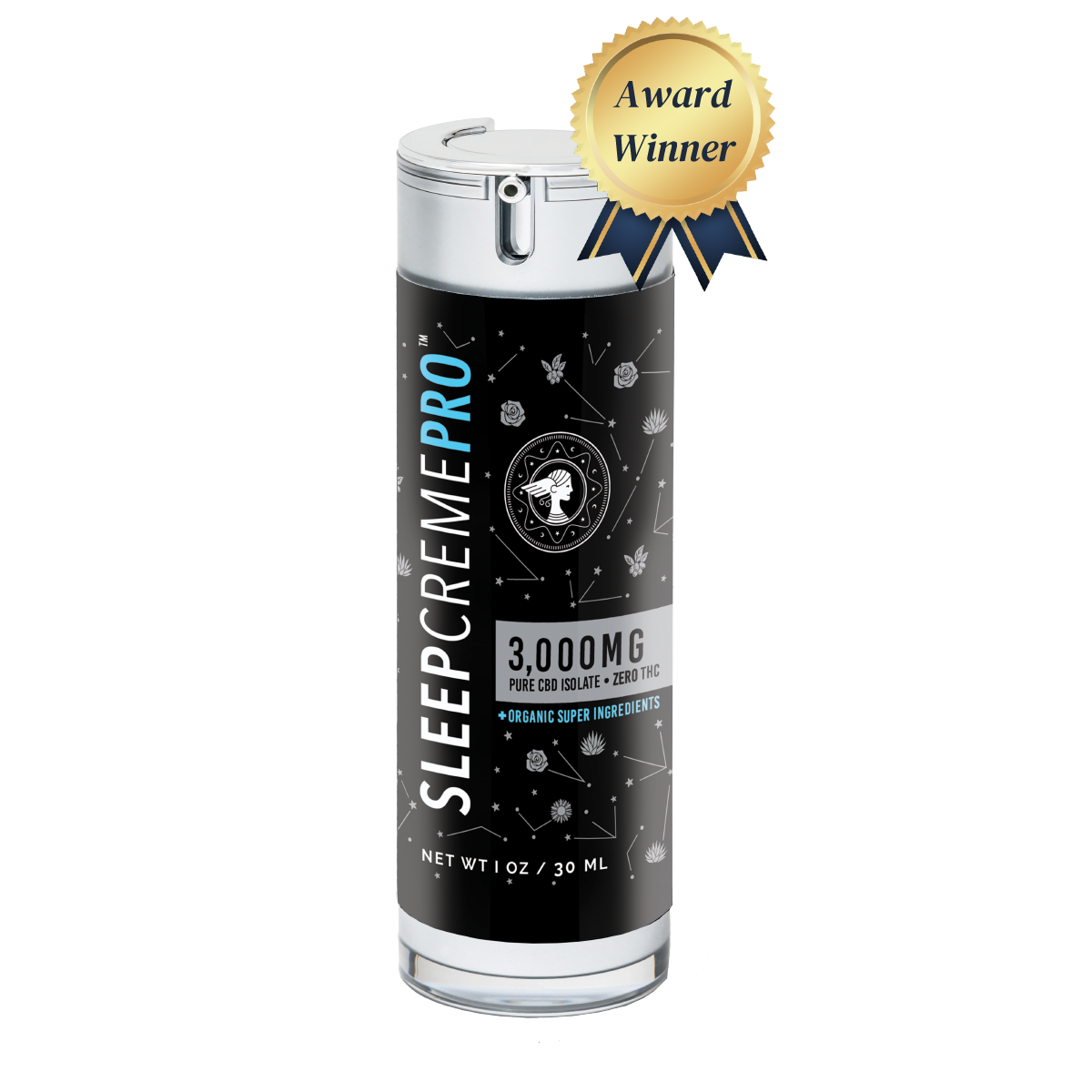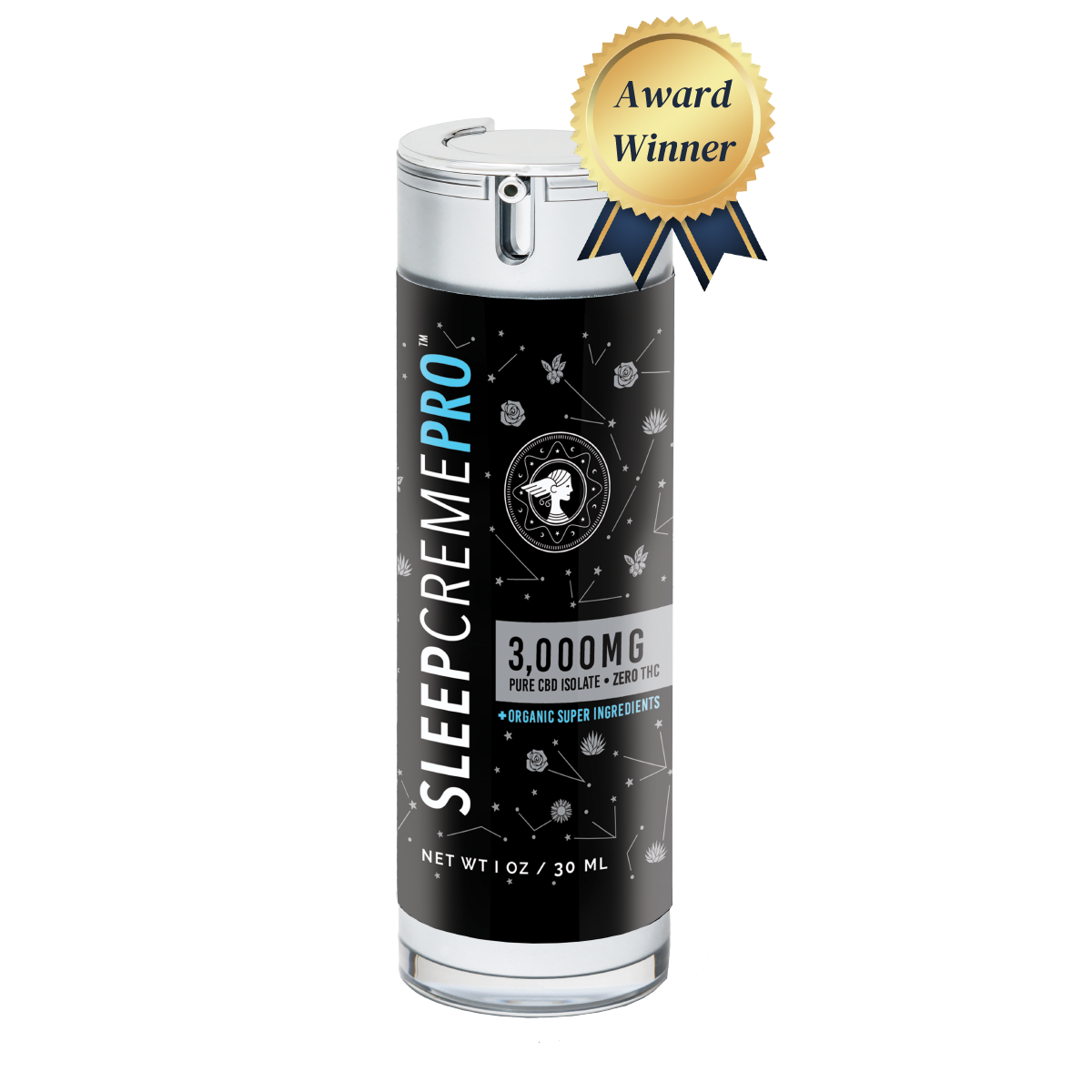What Really Happens at Night — and How SleepCreme Helps Your Body Move Through Every Stage
For many Americans, sleep quality has quietly declined over the past decade. According to the Sleep Foundation and recent studies from the American Academy of Sleep Medicine, factors like stress, late-night screen time, inconsistent routines, nighttime anxiety, and physical discomfort have disrupted the natural rhythm of our sleep. But to really improve rest, it helps to understand what actually happens while we sleep and why each stage is essential for both physical and mental renewal.
A normal night of sleep moves through four key stages, cycling every 90–120 minutes. These cycles repeat three to five times per night, and the quality of each stage affects everything from your immune system and hormones to your memory, mood, and metabolism. Let’s break down each cycle, what the science says, and how SleepCreme can support the process naturally.
Stage 1 Sleep — The Transition From Wakefulness (N1)
Stage 1 is the entry gate to sleep. It’s the lightest stage, lasting only 1–7 minutes for most healthy adults. Your muscles soften, your breathing starts to slow, and your brain transitions from active beta waves to slower theta waves. You're not fully asleep yet, but you're no longer fully awake.
What Happens When You Don’t Fall Asleep Right Away
This is where many people get stuck. Instead of drifting off, they lie awake thinking about tomorrow, scrolling on their phone, or battling chronic discomfort. When the mind or body resists this transition, Stage 1 drags out. That delay can:
-
Raise cortisol (stress hormone) levels
-
Increase heart rate
-
Shorten total deep sleep and REM sleep later in the night
-
Trigger frustration or anxiety about “not falling asleep fast enough”
Research from the Sleep Foundation and Harvard Medical School shows that delayed sleep onset (taking more than 20–30 minutes to fall asleep) is linked with higher insomnia rates and next-day fatigue.
How SleepCreme Supports Stage 1
This is where SleepCreme becomes genuinely beneficial. By applying it during your nighttime wind-down routine, you allow the body to relax more quickly as the CBD isolate blends with soothing botanicals and skin-absorbable ingredients. Users consistently report that:
-
Their thoughts quiet down sooner
-
Physical tension eases
-
They drift off faster with less tossing and turning
In other words, SleepCreme helps you enter Stage 1 and move through it more efficiently, supporting the natural onset of sleep instead of fighting it.
Stage 2 Sleep — Light, Stable Sleep (N2)
Stage 2 accounts for roughly 50% of the total sleep cycle each night. During this stage, the body shifts from light transition to stability:
-
Heart rate slows
-
Eye movements stop
-
Body temperature drops slightly
-
Brain waves produce “sleep spindles” and “K-complexes,” which protect the brain from waking too easily
This stage acts as the “holding space” between wakefulness and deep repair, and your body cycles back through Stage 2 multiple times during the night.
Why Stage 2 Matters
Stage 2 plays a significant role in:
-
Memory processing
-
Learning new information
-
Muscle relaxation
-
Nervous system regulation
If stress, pain, or discomfort interrupts you here, you may experience restless nights even if you think you're “asleep.”
Stage 3 Sleep — Deep, Slow-Wave Sleep (N3)
Stage 3 is commonly called deep sleep, slow-wave sleep, or delta sleep. This stage is physically restorative and incredibly difficult to wake from. In healthy adults, Stage 3 dominates the first half of the night.
What the Body Does in Stage 3
According to the Sleep Foundation and National Institutes of Health, this stage is responsible for:
-
Tissue repair and cell regeneration
-
Muscle and bone restoration
-
Immune system strengthening
-
Hormone regulation (including human growth hormone)
-
Lowering inflammation
When people don’t get adequate deep sleep, they tend to experience:
-
Daytime fatigue
-
Weakened immunity
-
Brain fog
-
Mood instability
A lack of Deep Sleep over time has been linked to chronic illnesses, weight gain, and accelerated aging processes.
SleepCreme’s Role Leading Into Stage 3
Because slow-wave sleep depends heavily on your ability to reach and maintain earlier sleep stages without interruption, using SleepCreme before bed improves the likelihood of hitting deeper sleep sooner — especially for adults dealing with tension, menopause symptoms, pain, or stress.
REM Sleep — Rapid Eye Movement and Active Brain Restoration
After cycling through NREM sleep, the brain moves into REM Sleep, typically starting about 90 minutes after falling asleep. Each REM period gets longer across the night, peaking in the early morning hours.
What Happens During REM
-
Most dreaming occurs
-
Brain activity increases
-
Eyes move rapidly under closed lids
-
The body becomes temporarily “paralyzed” (so we don’t act out dreams)
-
Emotional processing occurs
-
Short-term memories are transferred to long-term storage
REM is strongly tied to mental clarity, creativity, emotional resilience, and cognitive health.
When REM Gets Disrupted
Fragmented or shortened REM sleep can contribute to:
-
Mood swings
-
Impulsivity
-
Anxiety
-
Memory issues
-
Reduced focus
High stress, blue light exposure, hormone imbalance, pain, alcohol, and inconsistent sleep schedules can all disrupt REM cycles.
How the Sleep Cycle Repeats Through the Night
One complete sleep cycle lasts about 90–120 minutes, and healthy sleepers experience 4–6 cycles per night. The early half of the night is deep-sleep dominant (more Stage 3), while the morning is REM-dominant.
Disruption to any part of the cycle — whether it’s delayed sleep onset, pain-related waking, or hormonal insomnia — can affect your body’s ability to move naturally through all phases.
Why Sleep Quality Has Declined — and How to Recover It
Recent reports from SleepFoundation.org, sleepcycle.org, and the Cleveland Clinic point to several lifestyle factors disrupting nightly cycles:
-
Increased late-night anxiety
-
Overuse of digital devices and blue light
-
Menopause and hormonal shifts
-
Chronic pain or inflammation
-
Poor sleep hygiene
-
Stimulants and alcohol
-
Inconsistent sleep schedules
-
Long daytime naps
-
Aging
While people often focus on how many hours they sleep, what truly matters is cycling through each stage properly.
How SleepCreme Supports Natural Sleep Cycling
SleepCreme doesn't force sleep — it supports the body during the crucial wind-down phase so the brain and nervous system can transition through the stages naturally.
Users experience benefits like:
-
Faster transition through Stage 1
-
Less tension before bed
-
Fewer restless wake-ups
-
Longer periods of deep sleep
-
More consistent REM cycles
-
Reduced anxiety around “trying to sleep”
Because SleepCreme is topical, CBD isolate and botanical ingredients absorb through the skin to soothe the nervous system without grogginess, pills, THC, or melatonin.
How CBD Can Influence Sleep Cycles
CBD (cannabidiol) interacts with the body’s endocannabinoid system (ECS) — a network of receptors that helps regulate mood, pain, and sleep-wake balance. Unlike THC, CBD doesn’t cause sedation or intoxication. Instead, it works more like a balancer, helping the body maintain homeostasis.
Research published in journals like Frontiers in Pharmacology and The Permanente Journal has shown that CBD may:
-
Reduce anxiety that delays sleep onset (Stage 1)
-
Ease physical tension and inflammation, improving deep sleep (Stage 3)
-
Stabilize REM sleep by lowering stress hormone spikes
-
Support longer, uninterrupted sleep cycles overall
By gently calming both body and mind, CBD encourages a smoother transition through the natural stages of sleep without forcing sedation. That’s why a topical product like SleepCreme, which delivers CBD through the skin for local and systemic relief, can make such a difference for people who struggle to relax or stay asleep naturally.
Practical Tips to Support Your Sleep Cycles
To make the most of your nightly rhythms (and maximize the impact of SleepCreme), sleep experts recommend:
-
Set a consistent bedtime and wake time
-
Dim lights and devices 1 hour before bed
-
Apply SleepCreme as part of a nightly ritual
-
Keep the bedroom dark, cool, and quiet
-
Avoid caffeine late in the day
-
Limit alcohol near bedtime
-
Try light stretching, journaling, or breathing exercises
The goal is to create an environment that allows the body to naturally progress through each stage.
Bringing It All Together
Understanding sleep cycles is more than science — it’s a roadmap to better health. Each stage plays a unique role, and skipping or delaying one phase affects the next. When falling asleep is difficult, deep sleep is shortened. If deep sleep gets interrupted, REM suffers. Over time, that impacts energy, hormones, mood, weight, and immunity.
By supporting your body's ability to relax at the very start — especially during Stage 1 — SleepCreme helps break the cycle of delayed or restless sleep and opens the door to more complete rest throughout the night.
References
Here are the links to the primary sources used for the article:
-
Stages of Sleep: What Happens in a Normal Sleep Cycle? (Sleep Foundation) — https://www.sleepfoundation.org/stages-of-sleep (Sleep Foundation)
-
How Sleep Works: Understanding the Science of Sleep (Sleep Foundation) — https://www.sleepfoundation.org/how-sleep-works (Sleep Foundation)
-
Sleep: What It Is, Why It’s Important, Stages, REM & NREM (Cleveland Clinic) — https://my.clevelandclinic.org/health/body/12148-sleep-basics (Cleveland Clinic)
-
Is CBD a Safe and Effective Sleep Aid? (Sleep Foundation) — https://www.sleepfoundation.org/sleep-aids/cbd-for-sleep (Sleep Foundation)
-
Effects of Cannabinoids on Sleep and their Therapeutic Potential for … (PMC) — https://www.ncbi.nlm.nih.gov/pmc/articles/PMC8116407/ (PMC)
-
Cannabidiol in Anxiety and Sleep: A Large Case Series (PMC) — https://www.ncbi.nlm.nih.gov/pmc/articles/PMC6326553/ (PMC)








